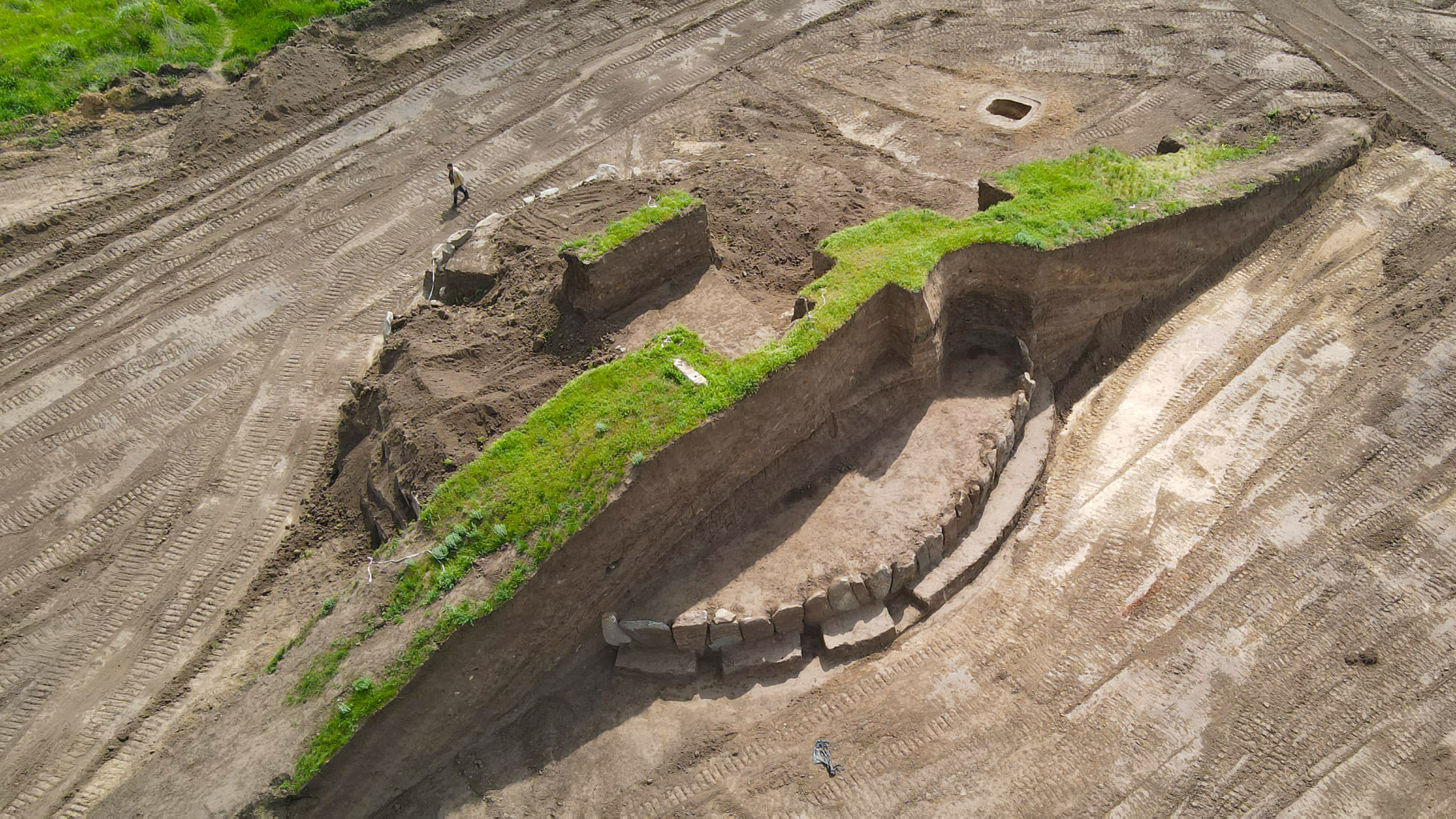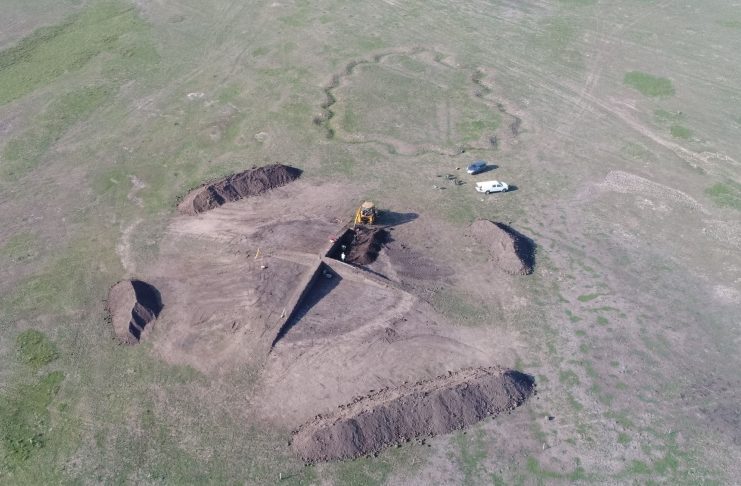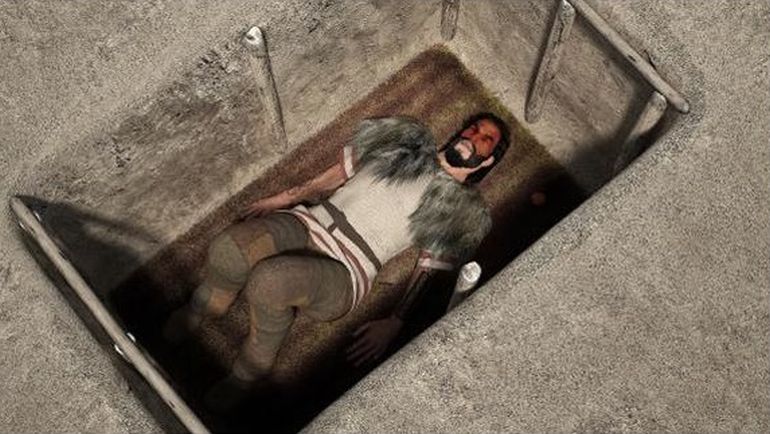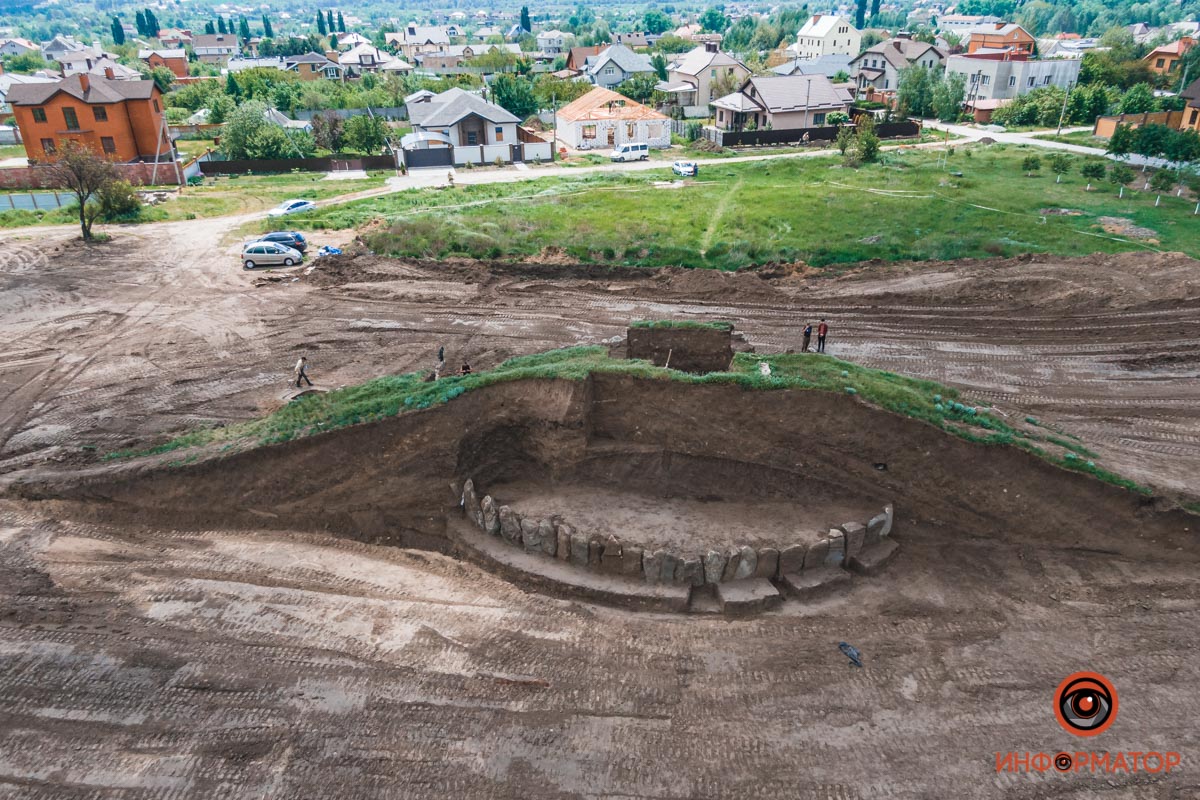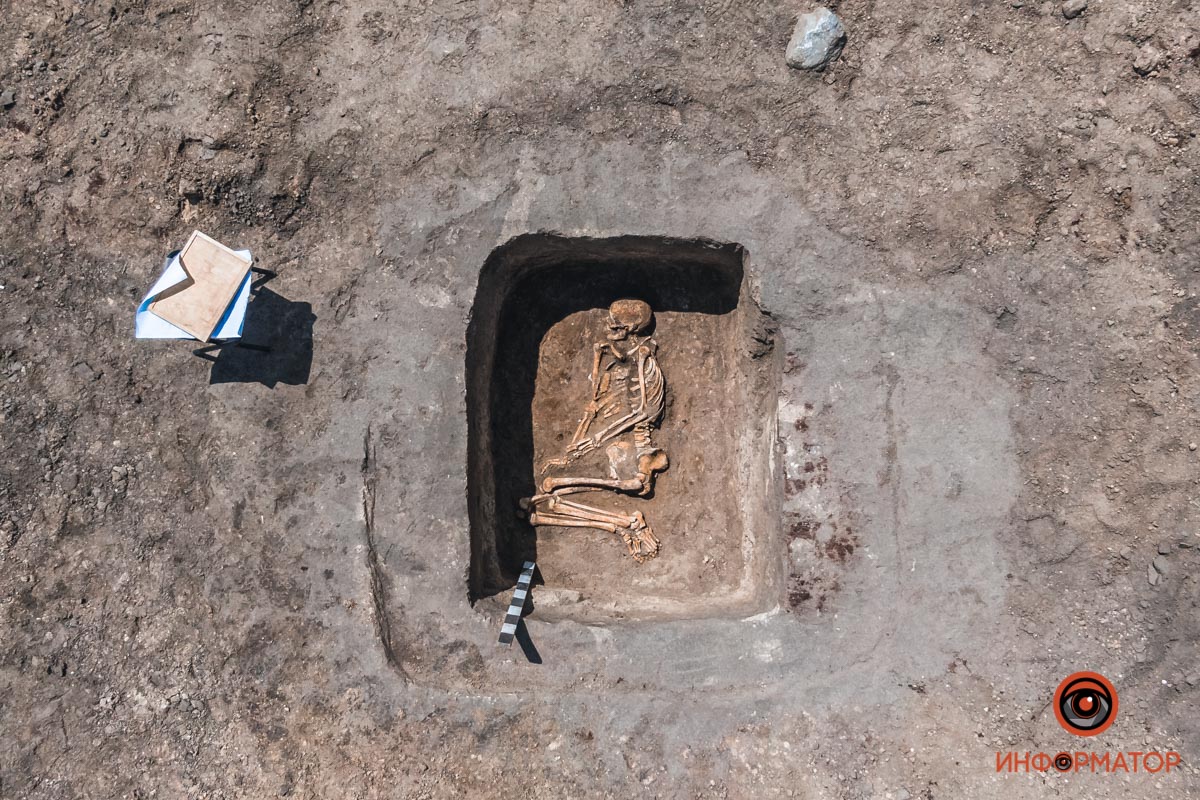yamna Culture
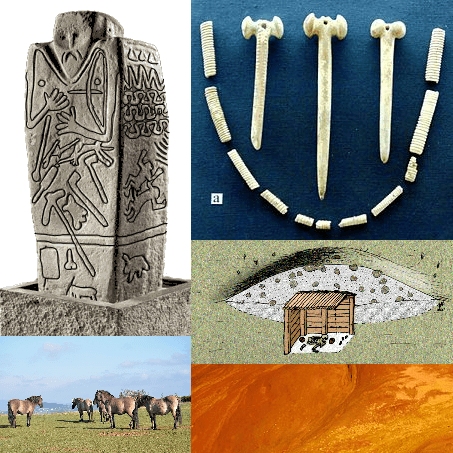
This culture existed from 3300 BC to 2600 BC. It covered the territory of modern day Southern Moldova, Southern and Eastern Ukraine, steppes of South-western Russia and Western Kazakhstan. In its Western range, it was succeeded by the Catacomb Culture (2800 BC – 2200 BC) and in the East at the middle Volga by the Poltavka Culture (2700 BC – 2100 BC). These two cultures were followed by the Srubna Culture (1800 BC – 1200 BC).
Yamna population was overwhelmingly brown-eyed, dark-haired and had a skin color that was moderately light. This culture was predominantly nomadic but some agriculture was practiced near the rivers and a few hillforts have benn discovered. Yamna population used wheeled carts that were pulled by oxen or horses. A decorated stone idol from around 3000 BC was discovered near the Ukrainian village Kernosivka (shown on the picture to the right).
💀 They buried their dead in a single grave in a form of a kurgan (tumulus) and the body of the deceased was covered with ochre. Animals sacrificed as grave offerings were: cattle, sheep, goats and horses. 💀
The kurgans and wheeled wagons in the Maykop (Maikop) Culture near the Caucasus most probably appeared there because of the Yamna influence. Same goes for the Kura-Araxes Culture. The Caucasian Hunter-Gatherer DNA component in the Yamna population appeared there around 6000 BC so it is impossible that the Indo-European languages would come from the area of Caucasus towards North, also Circassian language and other Caucasian languages do not have many cognate words when compared to Indo-European languages, except for words like "eagle", "mountain" (gora) and "good".
In the Baltic Sea region the passage from a Hunter-Gatherer based economy to a farming based economy coincided with the arrival of individuals with the Yamna ancestry (Corded Ware Culture). This is different from what happened in Western and Southern Europe, where the Neolithic transition was caused by a population which came from the Near East.
DNA
The Northern Forest Steppe area of the Yamna Culture is the source of R1a and the Southern Steppe area is the source of R1b Y-DNA haplogroups in Europe and South Asia. R1b was the most common haplogroup among the Yamna Culture males.
The Yamna contribution in the modern populations of Eastern Europe ranges from 46.8% to 64.9% among Russians to 42.8% in Ukrainians. Finland has one of the highest Yamna contributions in all of Europe ranging from 50.4% to 67.8%. Both the upper class (buried in huge kurgan graves) and lower class (buried in shallow small graves) Yamnaya Southern Steppe males were overwhelmingly R1b-Z2103, while the minority carried the I2a-L699 haplogroup.
Haak et al. study from 2005 states that haplogroup R1b1a1b (R1b-M269) spread into Europe from the East after 3000 BC. Studies that analysed ancient human remains in Ireland and Portugal support the thesis that R1b1a1b (R1b-M269) was introduced in these places along with autosomal DNA from the Eastern European Steppes. The descendants of R1b-M269 are: R1b-L23 (found mostly among Armenians and in Afanasevo Culture), R1b-L51 (Bell Beakers), R1b-M412 (Italics and P-Celtic people), R1b-L151 (Basques, Brittany, Ireland, Spain, Portugal - earlier Q-Celtic people) and R1b-Z2103 (found in Indo-European Albania and Northern Turkey - Hittites).
This would mean that the Southern Steppe Yamna was the direct source of DNA only in Albanian, Tocharian, Romanian, Armenian and Anatolian population, while all other cultures derived their DNA from the Northern Forest-Steppe Yamna or rather Eastern European Hunter-Gatherer R1b-L51 population brotherly to R1b-Z2103. Both of those Southern and Northern R1b subclades descend from the R1b-L23 (a child of R1b-M269).
The ancient DNA study challenges the idea that as the Yamna moved East around 3000 BC (to Afanasievo), they brought Indo-European languages with them deep into India and Persia. That argument is based on the presence of Western Eurasian ancestry in South Asian populations. However, the new genetic analysis reveals that the West Eurasian ancestry comes from a later migration of people into India and Persia around 2000 BC to 1000 BC (from Andronovo Culture)[1].
The explanation of this phenomenon is that the Southern Yamna was a direct source for only the Afanasievo Culture (Tocharians). The Yamna related people living in the Northern Forest-Steppe region reached the Fatyanovo-Balanovo, then Sintashta then Andronovo, and finally BMAC, only after their initial expansion towards West, where they formed the CORDED WARE Culture near the Carpathian Mountains and bred the DOM2 type horses. From this area they moved towards the territory of Lithuania, Latvia, Belarus[2] and then moved to the Fatyanovo-Balanovo Culture (ancestral to Indo-Aryans and Tarim Mummies with R1a-Z93).
Gallery Of Artifacts
Horses and the Botai
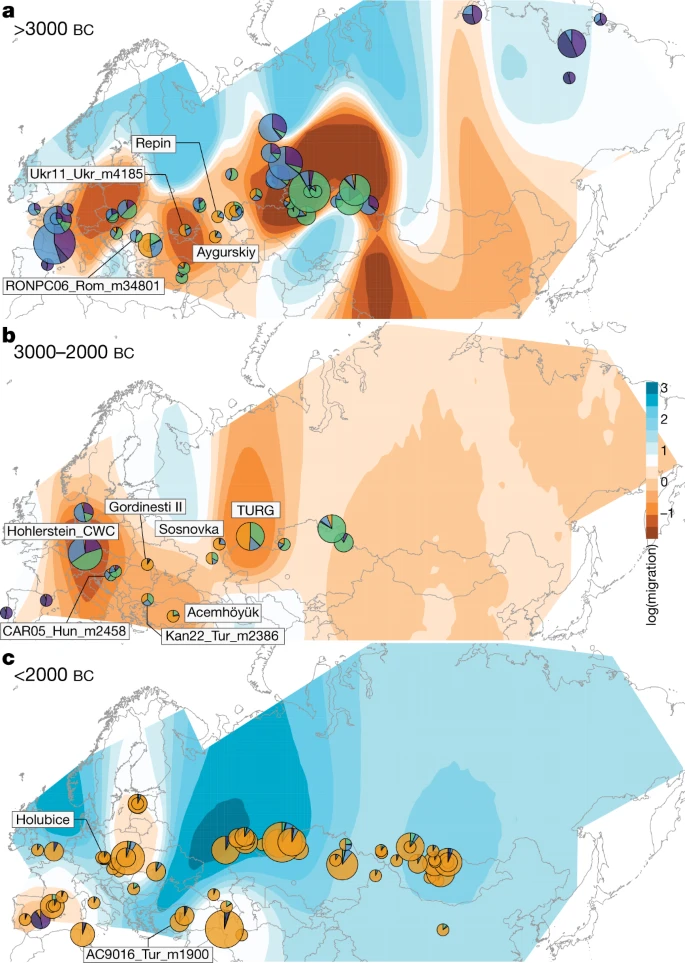
It turns out that the Botai and the Yamnaya didn't share many genetic similarities at all. The Botai were most closely related to a group of Paleolithic Hunter Gatherers, not people of the Western steppes like the Yamnaya. Instead of getting the scoop on horse breeding from Western herders, the Botai may have learned to domesticate horses on their own through hunts before transitioning to pastoral life in their horse-centered farming villages.
Further complicating the situation, a study of ancient horse DNA published in 2018 revealed that the Botai's horses aren't related to modern horses at all, blowing a hole in the decades-old idea that the Botai's domesticated horses were the forerunners of modern horses[3]. "We actually have two independent events of horse domestication", says Peter de Barros Damgaard, a molecular biologist from the Natural History Museum of Denmark who led the project. "While it is true that the Botai were the first to domesticate the horses, it wasn’t their horses that became widespread."[1].
The DNA of modern horses has mostly lineages of Y-DNA introduced by the Arabian horses in the 7th century AD. There are two new ancient lineages of horses discovered from Portugal and Siberia, both now exctinct, which means that they did not spread from those places for sure. The horses from 1000 years ago and modern horses are really two different creatures because of the process of heavy interbreeding for desired characteristics began around the year 1800 AD[3].
This does not mean that those Arabian horses did not share a common ancestor with those earlier European horses and that is exactly the case. A newest study from 2021 sheds more light on the DNA of modern horses. All modern horses can be modeled after a single horse (DOM2 sample) found in Gordinesti II in Western Ukraine. Even a horse that was found buried with a spoke-wheeled chariot at Sintashta was determined to be descended from that DOM2 sample. Horses from the Yamnaya Culture showed the same Gordinesti II characteristics but with additional 15% Botai horse admixture[4].
The Gordinesti II sample comes from around 3000 BC and at the same time horses from the territory of Poland, Czechia, Slovakia, Germany and France showed the Old European horse characteristics (Uralic and European) and lacked the Gordinesti II and Yamna horse related DNA. This changed around 2400 BC - 2000 BC and from that period whole European horse population can be modeled after the Gordinesti II DOM2 sample. By around 2200 BC - 2000 BC, the typical DOM2 ancestry profile appeared in Holubice (Bohemia, Czechia), the lower Danube (Gordinesti II) and central Anatolia (Acemhöyük), spreading across Eurasia shortly afterwards, eventually replacing all pre-existing lineages.
This means that it was the Unetice Culture and Urnfield Culture that spread the Indo-European horse DNA to Western and Southern Europe, not earlier Corded Ware Culture or Bell Beaker Culture, and especially not people from the Yamna Culture itself.
Przewalski horses are feral descendants of horses herded at Botai and not truly wild horses. The tarpan and modern Przewalski horses do not descend from the same ancestral population as modern domestic horses[4]. All domestic horses dated from 2000 BC to present only show around 2.7% of Botai-related ancestry. This indicates that a massive genomic turnover underpins the expansion of the horse stock that gave rise to modern domesticates, which coincides with large-scale human population expansions during the Early Bronze Age[5].
Physical features
The Yamna are believed to have been light-skinned and had a variety of eye colors, including dark eyes and blue eyes. The Western Steppe Herders carried an allele that is responsible for the expression of classical European blond hair. Gavin Evans has likewise stated that the "all-conquering" Western Steppe Herders were responsible for the transmission of this allele in to the dark haired native populations of Europe. In 2020, a study suggested that ancestry from Yamna Pastoralists was responsible for lightening the skin and hair color of modern Europeans, having a dominant effect on the phenotype of Northern Europeans, in particular.
About a quarter of ancient DNA samples from Yamna sites have an allele that is associated with lactase persistence, conferring lactose tolerance into adulthood. A study from 2021 confirmed that 16 Yamnaya individuals consumed cow, sheep and horse milk [6]. Steppe-derived populations such as the Yamna are thought to have brought this trait to Europe from the Eurasian Steppe, and it is hypothesized that it may have given them a biological advantage over the European populations who lacked it. Eurasian Steppe populations display higher frequencies of the lactose tolerance allele than Early European Farmers and Western Hunter-Gatherers who lacked the Steppe admixture (from Ancient North Eurasian + Eastern European Hunter-Gatherer + Caucasian Hunter-Gatherer).
All those statments above might be wrong when we consider the earlier Scanidnavian Hunter-Gatherers (SHG) that came into existence from the mixture of Western Hunter-Gatherers with Eastern European Hunter-Gatherers that already carried the Ancient North Eurasian genes for blond hair and lactase persistence. In a 2014 study by Lazaridis a single SHG individual from Motala, Sweden was identified as having 81% Western Hunter-Gatherer (WHG) ancestry and 19% Ancient North Eurasian (ANE) ancestry. Genomic data has shown that Scandinavian Hunter-Gatherers displayed higher levels of light pigmentation variants compared to their two source populations: WHG and EHG. Sampling of Scandinavian Hunter-Gatherers found variable eye colors (blue to light brown) and skin colors. They had a variation of hair colors, including dark, medium and blonde hair.
Almost 100% of Native Americans are lactose intolerant[7] and it means that the gene for lactase persistence did not originate in the common American-European Ancient North Eurasian population but rather in the Eastern European Hunter-Gatherer population made of WHG and ANE mixture.
Article updated on the 21st of July 2021

